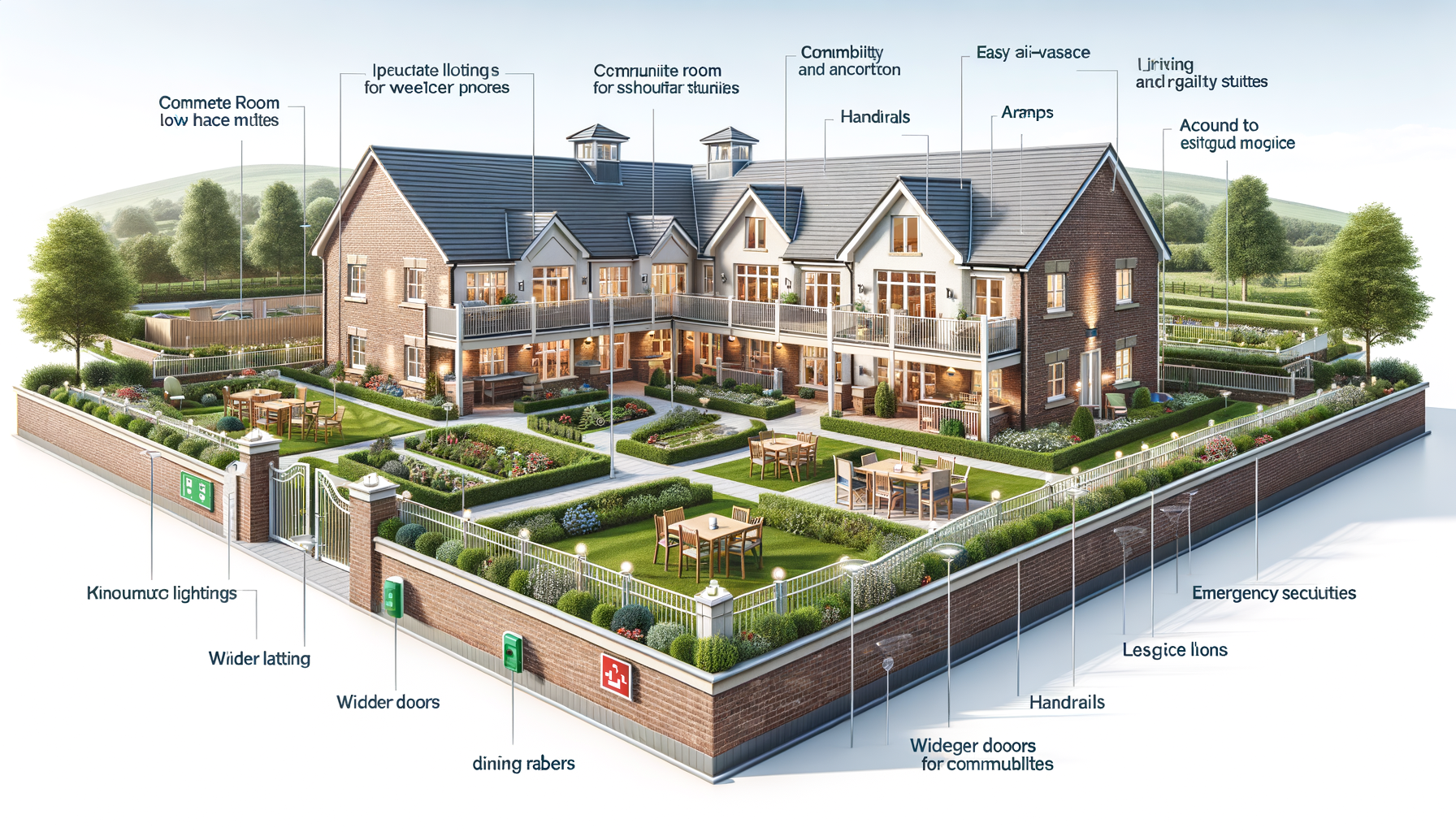Understanding Sheltered Housing
Sheltered housing is a specialized accommodation option designed to offer a safe and supportive environment for individuals who need some assistance but wish to maintain their independence. These housing options are typically aimed at older adults or those with certain disabilities, providing a community atmosphere that balances privacy with social interaction. Residents benefit from having their own private living spaces, often equipped with necessary facilities to cater to their needs. Additionally, communal areas are available to encourage socialization and community engagement.
One of the primary advantages of sheltered housing is the presence of on-site support staff. These professionals are available to assist with daily tasks, provide emergency support, and coordinate activities for residents. This ensures that help is readily available, enhancing the sense of security among residents. Moreover, the design of these facilities often includes features such as ramps, handrails, and emergency call systems, further ensuring safety and accessibility.
Sheltered housing can be a bridge between fully independent living and more intensive care options, offering an ideal solution for those who require some support but are not ready for a nursing home environment. This balance allows residents to enjoy autonomy while having peace of mind knowing that help is available if needed.
Social Benefits of Sheltered Housing
One of the often-overlooked advantages of sheltered housing is the social environment it fosters. Residents have the opportunity to engage in a variety of social activities, which are typically organized by the housing staff. This can range from group outings and exercise classes to arts and crafts sessions, all aimed at promoting a sense of community and belonging.
Social interaction is vital for mental and emotional well-being, particularly among older adults. Engaging in community activities helps combat feelings of loneliness and isolation, which are common concerns in this demographic. Sheltered housing provides an environment where residents can form friendships and support networks, enhancing their quality of life.
Moreover, the communal living aspect encourages residents to participate in decision-making processes, giving them a sense of control and involvement in their living environment. This empowerment can lead to increased satisfaction and happiness, as residents feel more connected and valued within their community.
Financial Considerations and Support
When considering sheltered housing, financial factors play a crucial role. Costs can vary significantly depending on the location, amenities, and level of support provided. However, sheltered housing is often more affordable than other care options, such as nursing homes, making it a viable choice for many individuals on a fixed income.
Many residents may qualify for financial assistance through government programs or subsidies, which can help offset the costs of sheltered housing. It is important for prospective residents and their families to research available funding options to ensure they can make an informed decision.
Additionally, the predictable nature of the costs associated with sheltered housing can provide financial peace of mind. Unlike owning a home, where unexpected maintenance and repair costs can arise, sheltered housing typically includes these expenses in the monthly fee, allowing residents to budget more effectively.
Health and Safety Features
Sheltered housing is designed with health and safety as a priority. Facilities are equipped with numerous safety features aimed at protecting residents. These can include secure entry systems, emergency call buttons in each room, and regular safety checks by on-site staff.
Furthermore, the staff in sheltered housing are trained to handle medical emergencies and provide basic health support. This immediate access to assistance can be crucial for residents who may experience sudden health issues, ensuring they receive prompt medical attention.
The design of sheltered housing also promotes healthy living. Many facilities offer access to fitness programs, healthy dining options, and wellness activities, encouraging residents to maintain an active and healthy lifestyle. This holistic approach to health and safety helps residents enjoy a higher quality of life while residing in sheltered housing.
Emotional and Psychological Well-being
The emotional and psychological well-being of residents is a central focus in sheltered housing. The supportive community environment helps reduce stress and anxiety, offering a sense of security and belonging. Residents often find comfort in knowing they are part of a community where they can share their experiences and challenges.
Structured activities and social events are designed to stimulate the mind and encourage engagement, which can be particularly beneficial for cognitive health. Participation in these activities can lead to improved mood and mental sharpness, contributing to overall well-being.
Additionally, the presence of on-site staff provides residents with a sense of reassurance. Knowing that help is available at any time can alleviate worries about potential emergencies, allowing residents to focus on enjoying their daily lives. This peace of mind is invaluable and can significantly enhance the emotional health of individuals living in sheltered housing.








